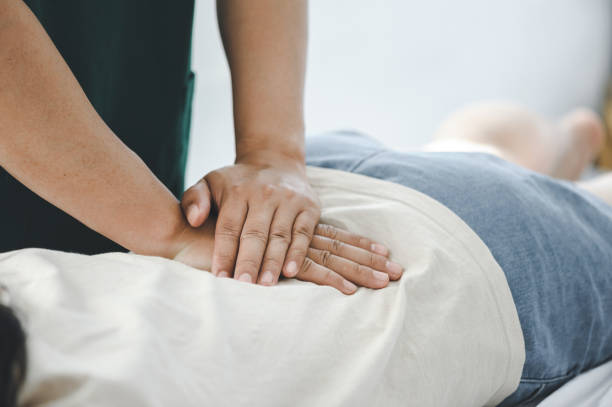Many women with loose, sagging breast tissue want cosmetic results that look natural. Choosing a board certified plastic surgeon like Dr. Dean White, who understands your aesthetic goals, is essential.
During a breast lift, your surgeon makes incisions around the areolae and moves the nipples to higher positions. They also remove excess skin and muscle.

Tightening
A breast lift can create a tighter, perkier shape to sagging or pendulous breasts. It does so by removing excess skin, tightening breast tissue, and elevating the nipple & areola to a more youthful position.
The results of this procedure can be dramatic, and while many women choose to pair a lift with other breast enhancement procedures for more comprehensive improvements, the most important thing is that the final result looks natural. This is why cosmetic surgeons are so skilled at achieving natural-looking breast lifts — they consider factors like skin tone, chest size and quantity of natural breast tissue, and personal preferences and goals when creating a treatment plan.
Besides surgical options, women with sagging breasts can also opt for nonsurgical treatments such as a vampire breast lift (VBL) or caci bust. VBL uses platelet-rich plasma from your own body to stimulate breast tissue growth and give a subtle boost that doesn’t require anesthesia. A breast lift with PRP can also reduce stretch marks and wrinkles around the nipples.
For more significant sagging or pendulous breasts, an anchor lift is often the best option. This technique involves 3 incisions — one around the areola, one running vertically from the bottom of the areola to the inframammary fold underneath the breast, and another along the crease beneath the areola, all of which can be easily hidden with a bikini top.
Reshaping
Many women who have undergone significant changes in their breasts, such as pregnancy or aging, desire perkier breasts that sit higher on the chest. The most common procedure for this is a breast lift. A plastic surgeon removes excess skin, tightens the remaining tissue structures and reshapes the breast to create more youthful-looking breasts. A plastic surgeon may also reposition the areola or nipple to a more aesthetically pleasing location.
A newer variation of a breast lift involves using the patient’s own fat cells to enhance the breasts and produce more natural-looking results. During this treatment, the surgeon harvests fat cells from another area of the body via liposuction before injecting them into the breasts. As a result, a patient’s breasts appear more full, but they don’t have the telltale lumps or ridges that can indicate implants.
The type of implant a patient chooses can make an impact on the final appearance of their breasts. Round implants are generally considered the most natural, but shaped implants are also an option for patients seeking more realistic breast enhancement results. Shaped implants are flatter at the top than round implants and have a more “moon-like” curve in the bottom.
A plastic surgeon can reduce the likelihood of rippling or stretching of the breasts by placing them under the pectoral muscle rather than over it. This technique also minimizes the risk of breasts drooping or falling.

Repositioning
Some women’s breasts naturally droop after pregnancy, breastfeeding or significant weight loss. Cosmetic surgeons can correct this by removing excess skin, tightening breast tissue and shifting the nipples to higher positions on the breasts for a firmer and perkier look. They can also reduce the size of enlarged areolae.
For patients who want to add volume, a lift can be combined with implants. When implants are placed under the pectoral muscle, there is less risk that the new breasts will stretch or droop.
Before your surgery, your cosmetic surgeon will review your medical history and do a physical exam. This includes an examination of the nipples and areolae to make sure they have a healthy color and position.
Once the procedure begins, your surgeon will put you in a surgical gown and clean and prep the area. They’ll make an incision around your areola and possibly one or more incisions running vertically and horizontally. They’ll remove or reposition breast tissue and fat as needed to create the look you want, then they’ll close the incisions.
A breast lift can be used on its own or in combination with other cosmetic procedures, such as a tummy tuck or liposuction. Many women who choose to have a lift also opt for a reduction of their stretch marks or scars.
Lifting
Many women want a lift procedure that doesn’t involve breast implants. They may believe their partners will find them more attractive with natural results, or they could simply prefer to avoid the appearance and feel of artificial volume. Regardless of their reasons, this desire is entirely normal.
During mastopexy, or a breast lift procedure, plastic surgeons will use existing tissue to reshape and elevate the breasts. This includes using a combination of stitches and surgical tape to tighten muscle tissue. It can also include reducing the size of the areolas or shifting the nipples to higher positions. The surgeon might also trim away excess skin or tissue to create the desired breast shape.
Once the surgeon has created the new breast shape, they’ll close any incisions and bandages. This procedure typically lasts 2 to 3 hours.
For women who’ve experienced significant breast changes due to pregnancy or breastfeeding, a breast lift with or without implants can restore a tighter, perkier look. A lift can also address changes caused by weight loss, as well as drooping breast tissue that has developed due to aging.
Whether you choose a sexy lollipop shape or something more subtle, a lift will improve your self-image and make you feel better about your figure.
If you’re interested in a lift, schedule a consultation with a board-certified cosmetic plastic surgeon like Mr. Dean White, you can visit his website at deanwhite.com.au.
Address: The Avani Building, Suite 1, Level 1/12 Nelson Rd, Box Hill VIC 3128
Phone: (03) 9895 7631
Website: https://deanwhite.com.au


